Digital Philology, Parrots, and Cake: Two Years at the ISAW Library
Since joining the ISAW Library in 2016, I have kept myself busy. I have published a couple of articles as well as some reviews and essays. I have presented papers and held workshops. I have taught the introductory digital methods seminar for the graduate students here and hosted a series of brown-bag meetings on computer programming. And this just scratches the surface. Still, there are a handful of moments that stand out from my two and a half years here and—on the occasion of my last day at the Library—I wanted to share them with the ISAW community. In that spirit, here are five highlights from my time as Assistant Research Scholar at the ISAW Library:
Future Philologies Without a doubt, the highlight of my time at the ISAW Library was Future Philologies: Digital Directions in Ancient World Text, a conference that I organized in April 2018 on the intersection of historical-language research and computer science. The conference brought together two threads in my research agenda since arriving at ISAW: first, a commitment to digital tools and methods for advancing ancient world study, and, secondly, a broadening of the definition of classics. My day-to-day work at the ISAW Library—and on related projects like the Classical Language Toolkit—adapts methodologies from computational fields like text mining, information retrieval, and natural language processing for use on data-driven projects concerning antiquity. ISAW, with its broad, inclusive definition of the ancient world, has been the perfect laboratory for applying these methods beyond the Latin and Greek texts which I was trained in as a Classics PhD. Sure, we had Latin and Greek projects at Future Philologies, but also Coptic, Persian, Arabic, Classical Chinese, Sumerian, and more. As such, the conference worked as a one-day distillation of the research agenda—somewhere between digital philology and comparative philology—that I developed while at ISAW.
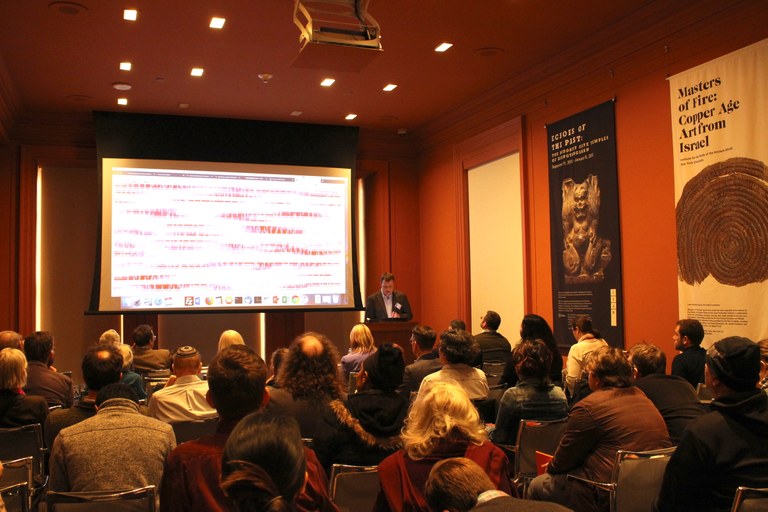 Donald Sturgeon presents on Chinese text analysis tools at Future Philologies.
Donald Sturgeon presents on Chinese text analysis tools at Future Philologies.
Digital Humanities 2017 From the moment I was hired as a research scholar in the Library, I was determined to get our research agenda out in front of a large audience and, since I was hired as digital projects associate, it was clear to me that this audience could be found at the annual conference of the Alliance of Digital Humanities Organizations. Gabriel Mckee, David Ratzan, Tom Elliott, and I had been developing strategies for a map-based discovery portal for the ISAW Library collection, exciting work that moved library search beyond text and into various kinds of geographic search, and we presented a poster on this project for DH2017 in Montreal. The poster was well received and this project has been the basis for several aspects of the library's research agenda since, including Gabriel's upcoming article "The Map as a Search Box: Using Linked Data to Create a Geographic Discovery System" and my continued development of the ISAW New Titles map.
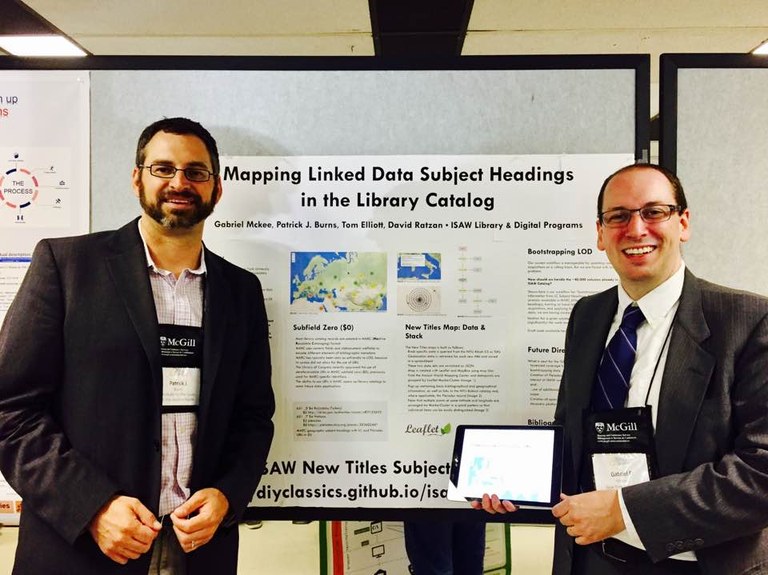 Patrick J. Burns and Gabriel McKee presenting ISAW Library research at the DH2017 Poster Session.
Patrick J. Burns and Gabriel McKee presenting ISAW Library research at the DH2017 Poster Session.
Ancient MakerSpaces The first project put on my desk when I started at the ISAW Library in June 2016 was an idea for a demonstration space for digital projects at the Society for Classical Studies Annual Meeting. This project would evolve quickly into Ancient MakerSpaces, an all-day program of digital project showcases that has been part of the SCS program now for three years. We have hosted cutting-edge research papers in computational approaches to literary criticism. We have hosted wide-ranging panel conversations about "making" versus "doing" in the digital Classics. But most significantly, we have hosted dozens of workshops for projects that are redefining research, teaching, and publication in our field and have done so with a focus on hands-on, interactive presentations. Participants come to Ancient MakerSpaces not only to learn about innovation in the field, but to use new tools and to work with new methodologies alongside developers. It has been a pleasure to shine a spotlight on this work and I am optimistic that this kind of digital showcase will become as regular a feature of the annual meeting as the book display.
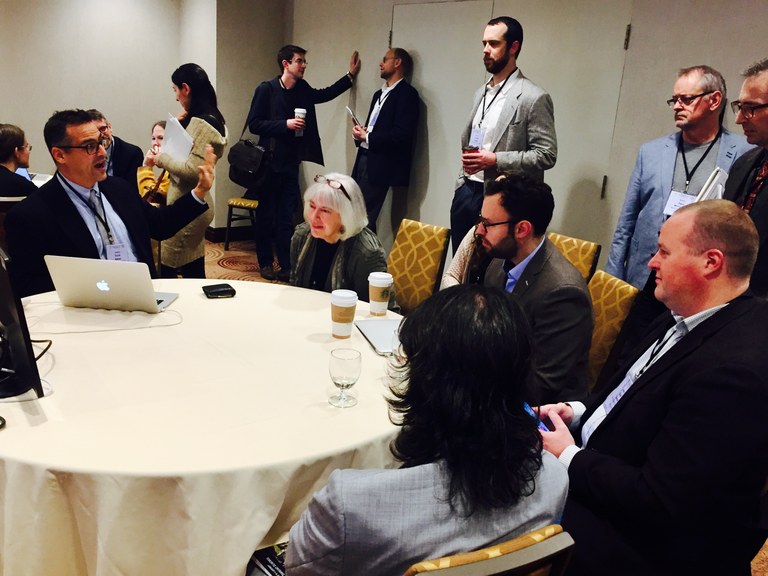 David Ratzan talks with workshop participants at Ancient MakerSpaces 2017.
David Ratzan talks with workshop participants at Ancient MakerSpaces 2017.
The Parrot Lectures In the spring of 2017, ISAW participated with the Guggenheim Museum and artists Lenka Clayton and Jon Rubin in a citywide art exhibition called …circle through New York. As part of the exhibition, ISAW hosted a salmon-crested cockatoo named Pinkie through the month of May. Chief Curator Jennifer Chi, interested in adding more ancient-world programming to Pinkie's residency, asked if I could discuss parrots (and other talking birds) in antiquity. I was thrilled. Having led Latin- and Greek-themed tours of the Bronx Zoo for years—the Itinera Zoologica—discoursing on the millennia-long tradition of animals in literature is something I love to do. So, on two Fridays that May, I delivered a pair of talks: the first called "Descriptio Psittaci: Observing Parrots from Aristotle to Gesner" and the second "Fabulae Psittaci—Parrot Anecdotes in Latin Literature." There is something special about hearing a 2000-year-old story about an animal in front of the animal itself—an immediacy of the past that is often difficult to reclaim. I was happy to bring this immediacy to the Oak Library for two of the most fun talks I have ever delivered.
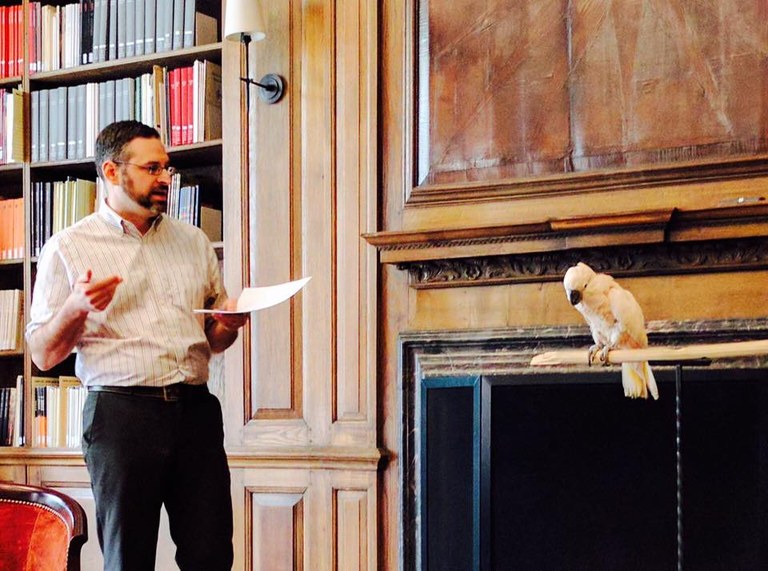 Patrick J. Burns gives a lecture on parrots in Greek and Roman literature in ISAW's Oak Library.
Patrick J. Burns gives a lecture on parrots in Greek and Roman literature in ISAW's Oak Library.
Roger Bagnall's Retirement Cake Not every moment as a researcher at ISAW has been spent on talks and papers—occasionally I was given other major responsibilities, like coming up with the perfect quotation from antiquity to decorate Roger Bagnall's retirement cake. There were a number of considerations—Greek? Latin? Coptic? Something from the papyri? I wanted something ad fontes, but looking back through Roger's career, there were just so many fontes. In the end, it came down to "write what you know"—I was reading Pliny the Younger's letters that summer for an article and came across some advice he gave to his friend Minicius about the advantages of escaping the city (Ep.1.9.7): Strepitum...relinque teque studiis vel otio trade, "Leave behind the city noise and give yourself time for a scholar's retirement." I was pleased with the result (shown in icing below)—perfect for someone balancing the Upper East Side with a house in the country and someone committed to continuing a life of studia between the two.
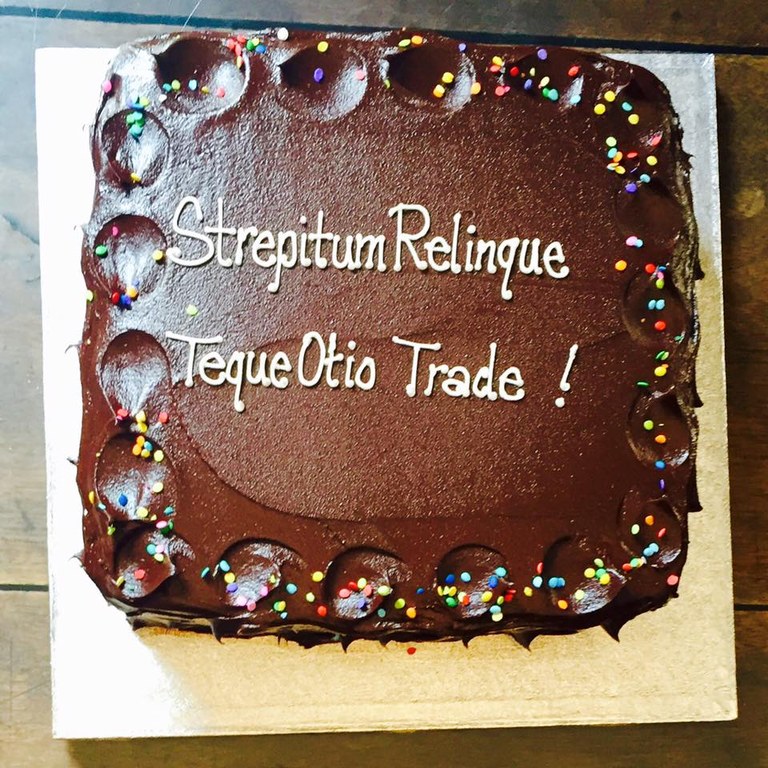 Cake—with Latin inscription from Pliny the Younger—presented to Roger Bagnall on the occasion of his retirement at ISAW.
Cake—with Latin inscription from Pliny the Younger—presented to Roger Bagnall on the occasion of his retirement at ISAW.
Special thanks are in order for David Ratzan and Gabriel Mckee who have been enthusiastic supporters of digital research in the Library and moreover to Tom Elliott and Sebastian Heath about whom the same could be said for ISAW in general. My work builds upon theirs and it has truly been a collaboration from the outset. I would also like to thank Roger Bagnall, Alexander Jones, and the ISAW community as a whole, as well as NYU Libraries, for creating a scholarly environment open to my vision of the computational and the Classical.